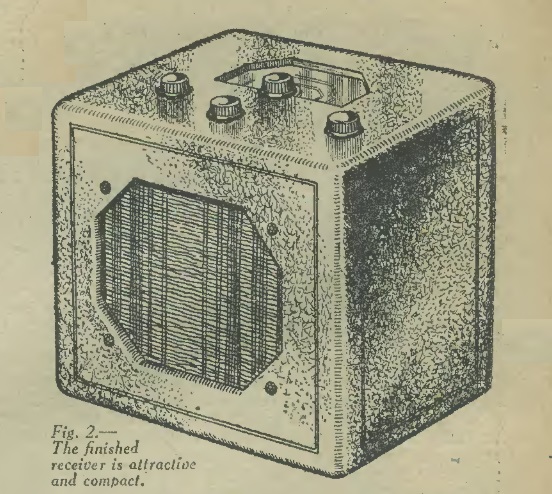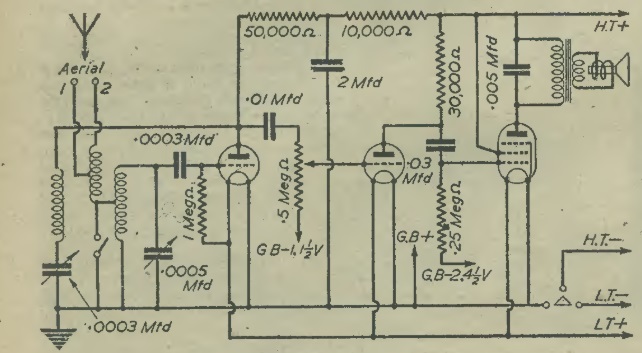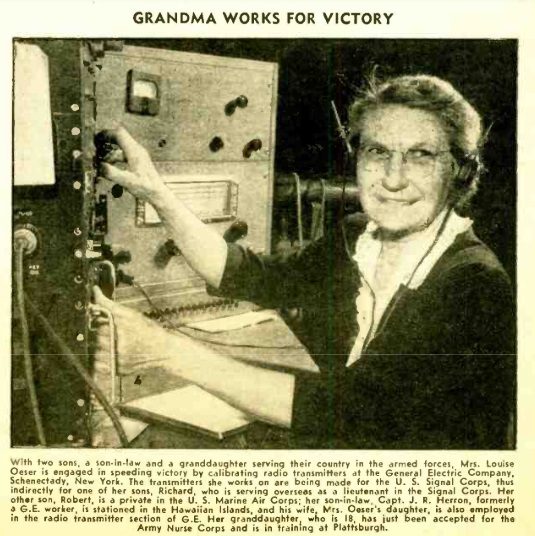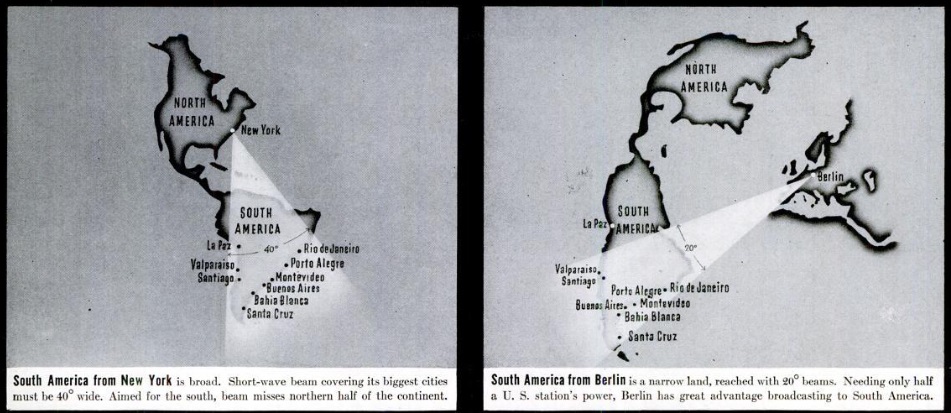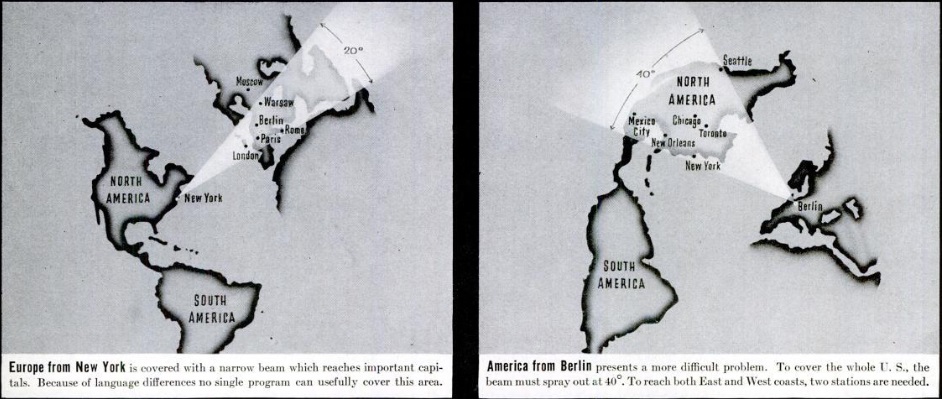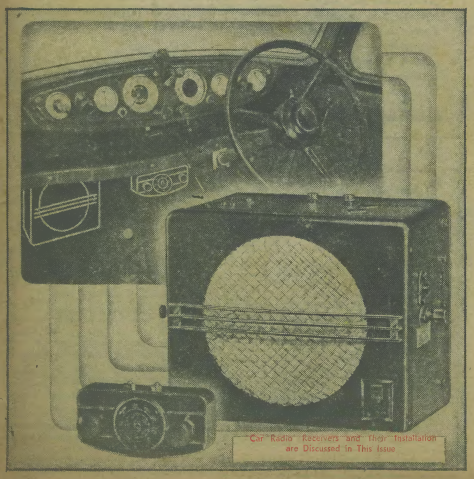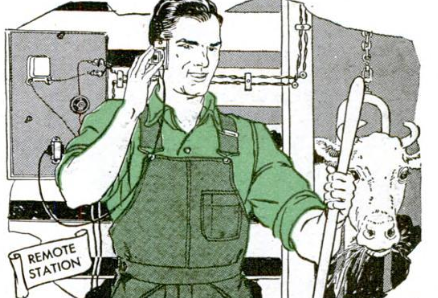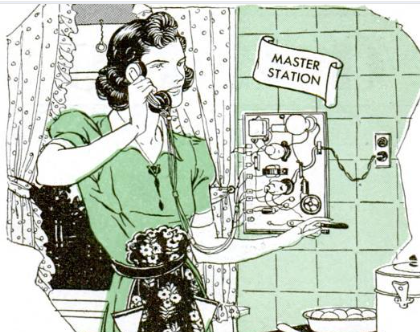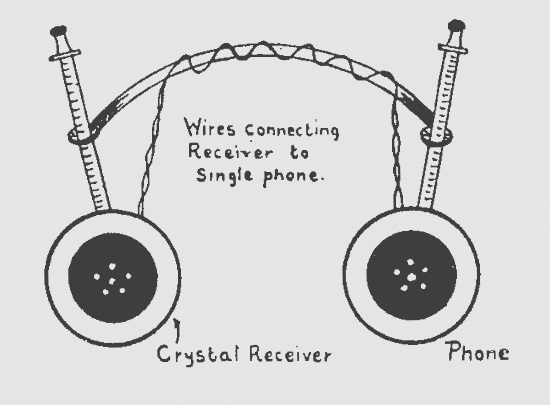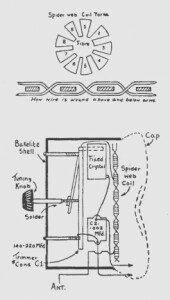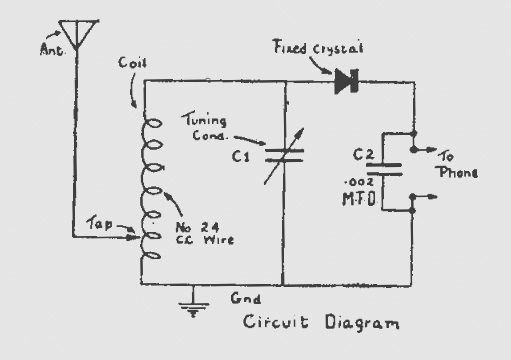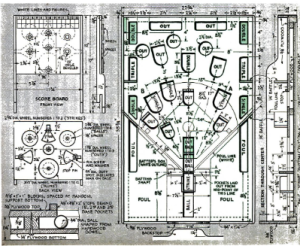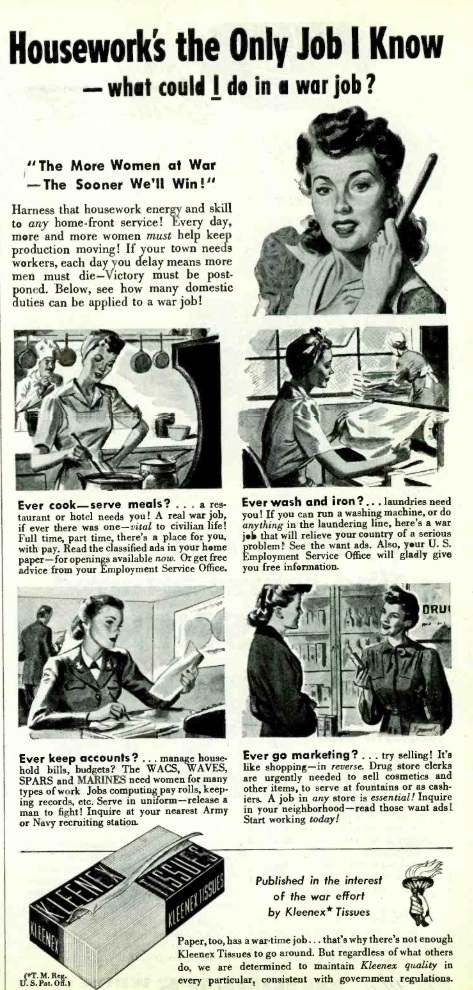 These ads appeared eighty years ago this month in the May 1944 issue of Radio Mirror.Preview to encourage women to do their patriotic duty and get a job.
These ads appeared eighty years ago this month in the May 1944 issue of Radio Mirror.Preview to encourage women to do their patriotic duty and get a job.
The ad below, sponsored by Pharma- Craft Corporation, makers of Fresh Underarm Deodorant Cream, advised women that the more of them hit the workforce, the faster the war would be over. If they didn’t do their part, it could be a month longer or a year longer than it otherwise would be.
The ad at left, published by the makers of Kleenex, gives some more practical advice for the woman who thinks she knows only housework. It reminds her that if she’s ever cooked or served meals, there were plenty of essential jobs waiting for her in hotels and restaurants. If she liked shopping, then she would probably be a good salesperson, since it was just like shopping–in reverse. Similarly, if she knew how to do washing or ironing, there were laundries in need of employees. Finally, if she was good with books, she could enlist in one of the armed services, freeing up a man to fight.
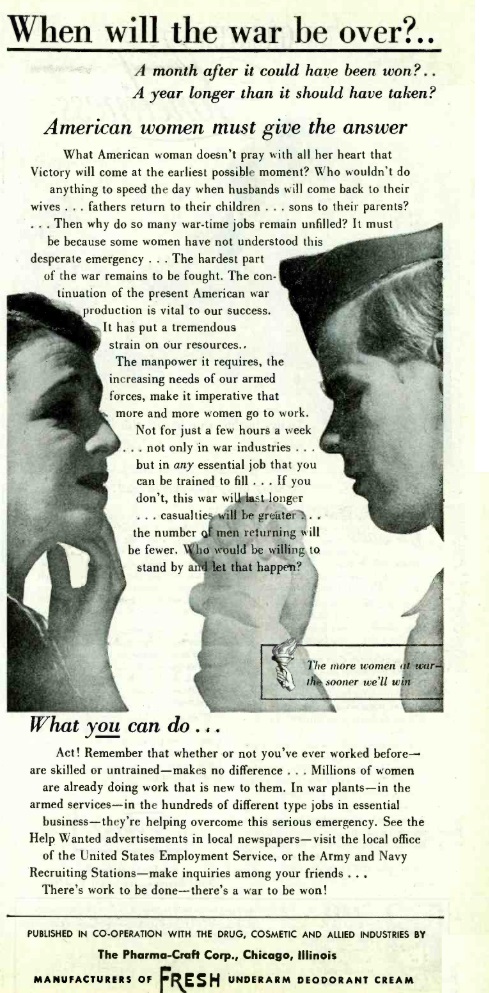
Some links on this site are affiliate links, meaning that this site earns a small commission if you make a purchase after using the link.
 Eighty years ago this month, the July 1944 issue of Radio News featured on its cover this U.S. Army Signal Corps photo of a radio operator reporting troop movements from his concealed position. It noted that his radio was a late model FM transmitter-receiver designed for armored vehicles. The magazine noted that the set was de-mountable and occasionally set up as shown here for field service.
Eighty years ago this month, the July 1944 issue of Radio News featured on its cover this U.S. Army Signal Corps photo of a radio operator reporting troop movements from his concealed position. It noted that his radio was a late model FM transmitter-receiver designed for armored vehicles. The magazine noted that the set was de-mountable and occasionally set up as shown here for field service.
